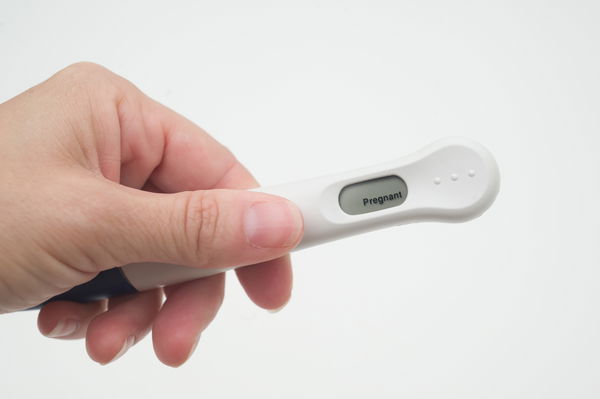Highlights
- The expectations and understanding of the adults, including parents and teachers, has a tremendous impact on children and can push them toward health or illness. Post This
- Exercising sensitivity and empathy toward children, while trying to understand their limitations, can prevent distress and foster emotional and mental health during these unprecedented times. Post This
Last week, a troubling New York Times piece highlighted the increase in teens who are having thoughts of suicide and engaging in self harm, with one mother of a high-school-aged boy who recently began cutting himself, sharing, “The social isolation…over all this time, it just got to him.” A CDC report from November reported that “the proportion of mental health–related visits for children aged 5–11 and 12–17 years increased approximately 24%. and 31%, respectively” since 2019.
This is consistent with what I am seeing in my role as a therapist in New York City. I am flooded with requests from families who believe their children are in psychological crisis. Because my office is at capacity, I do everything I can to provide these families with a referral. As I search for a suitable therapist, I hear, repeatedly, “sorry I am full” or “I have a three-month waiting list.” With the uptick of mental health issues due to the pandemic—including anxiety, depression, and resulting behaviors like distractibility, impulsivity and suicidal thinking—children and teenagers are at risk.
The increasing need for mental healthcare due to the stress of schools being closed down, isolation at home, and the abnormal pressure to learn remotely has sent some children, teens, and their families into a tailspin. But an important question is what kinds of behaviors could be related to the stresses of the pandemic but not necessarily signs of a pervasive mental illness, and how should we address those behaviors to prevent them from becoming chronic illness?
It is unnatural for children to sit in front of a zoom session, particularly children under the age of 10, for more than 20 to 30 minutes at a time. The general rule of thumb is that children can concentrate on one task for two to five minutes per year old. Of course, this is under normal circumstances—not accounting for all of the remote learning difficulties and distractions of COVID-life, including visual overload, lack of physical cues, internet browsers in the background, and unrelated household distractions that make it difficult for even adults to pay attention during zoom meetings. In addition, physical movement during school hours is generally recommended for increased classroom functioning, but this, too, becomes more difficult during virtual learning, and even for schools that are back in person. All of this together is causing children to fidget, be more distracted and bored, and to even appear to have ADHD like or impulsive behaviors.
When children are faced with intense frustration they cannot manage, or they are confronted with expectations they cannot meet, they become fearful, which can result in a fight or flight response in the brain. The distractibility, agitation, and difficulty sitting still is the flight response. Impulsivity and aggressive behavior is the fight. These responses are protective responses of our bodies to a perceived threat. The problem is schoolwork that is meant to be feel safe, stimulating, engaging, and competence building has, this year during COVID-19, provoked an acute stress response in some children and adolescents. The diagnosis of ADHD or distractibility in these cases is not only inappropriate, and inaccurate, but harmful to the children and their families.
What kinds of behaviors could be related to the stresses of the pandemic but not necessarily signs of a pervasive mental illness, and how should we address those behaviors to prevent them from becoming chronic illness?
If we replace judgment of children’s limited ability to tolerate frustration, disconnection, and social isolation with understanding, empathy, and adaptation to their needs, then we can prevent these acute stress responses from becoming chronic mental illness. It is not a foregone conclusion that temporary symptoms of acute stress will develop into anxiety, depression, or ADHD, but if we misunderstand and mishandle these signs, they may become chronic and harder to treat. For instance, by reducing the time children have to be online, increasing the intervals between online classes, making their activities more fun, playful, and engaging, and reducing or eliminating homework during this stressful time, we can adapt to their needs rather than pushing up against their defenses. If we continue to put pressure on children to spend long periods of time online, punish them when they cannot stay engaged digitally, and impose homework assignments they cannot complete, we are pushing them toward anxiety, depression, and a feeling of failure. The expectations and understanding of the adults, including parents and teachers, has a tremendous impact on children and can push them toward health or illness.
For those children who had underlying stressors before the pandemic, such as family or marital conflicts, a history of neglect or abuse, illness, divorce, family financial strain, or even moving house, COVID-19 may become the stressor that tips the balance for them. This year, the added pressure on children to learn remotely, the isolation from their friends, family, and teachers, as well as the break in their comforting routines, in many cases may exacerbate underlying issues and push them toward anxiety and depression.
The problem in our society is that at the first sign of distress in children, many educators, pediatricians, and even psychiatrists want to medicate away children’s pain rather than get to the bottom of it through talk and play therapy to work through the conflict at its root cause. Rather than try to understand where the pain comes from and address the cause, we attempt to silence the discomfort the pain, leaving many children overmedicated. This is a trend that preceded the pandemic. Medication should be a last resort for children and adolescents, not a first step, except in extreme crisis, and even then, it should be a bridge to understanding our children, not the solution. Ideally, medication should be prescribed by a qualified child and adolescent psychiatrist, not a general pediatrician. My recommendation to parents is to always visit a well-trained child/adolescent psychotherapist as a first step, who will refer you to a psychiatrist who specializes in treating children, if medication is deemed warranted after a thorough evaluation. More often than not, an investigation into the family-dynamics and the emotional life of the child will be more helpful than drugs. Although the American Academy of Pediatrics recommends psychotherapy as the first line of treatment for mental illness in children, a 2014 Ohio State study showed that the majority of kids aren’t being properly evaluated or being offered psychotherapy before being medicated. This is a grave mistake, as I discussed previously in an article titled, “We’re Overmedicating Our Children.”
By understanding the pandemic-induced stress children are under and by showing empathy rather than judgment and punishment, parents, teachers, and pediatricians can avoid mislabeling anxiety, depression, and ADHD. But if we ignore the signs that our children cannot tolerate the excessive frustration and intense expectations we place on them, then signs become symptoms and a stress response can become a chronic mental disorder. Exercising sensitivity and empathy toward children, while trying to understand their limitations, can prevent distress and foster emotional and mental health during these unprecedented times and in the future.
Erica Komisar, LCSW is a psychoanalyst, parent guidance expert, and author of Being There: Why Prioritizing Motherhood in the First Three Years Matters. She is also a Contributing Editor for the Institute For Family Studies.
Editor’s Note: The opinions expressed in this article are those of the author and do not necessarily reflect the official policy or viewpoint of the Institute for Family Studies.











